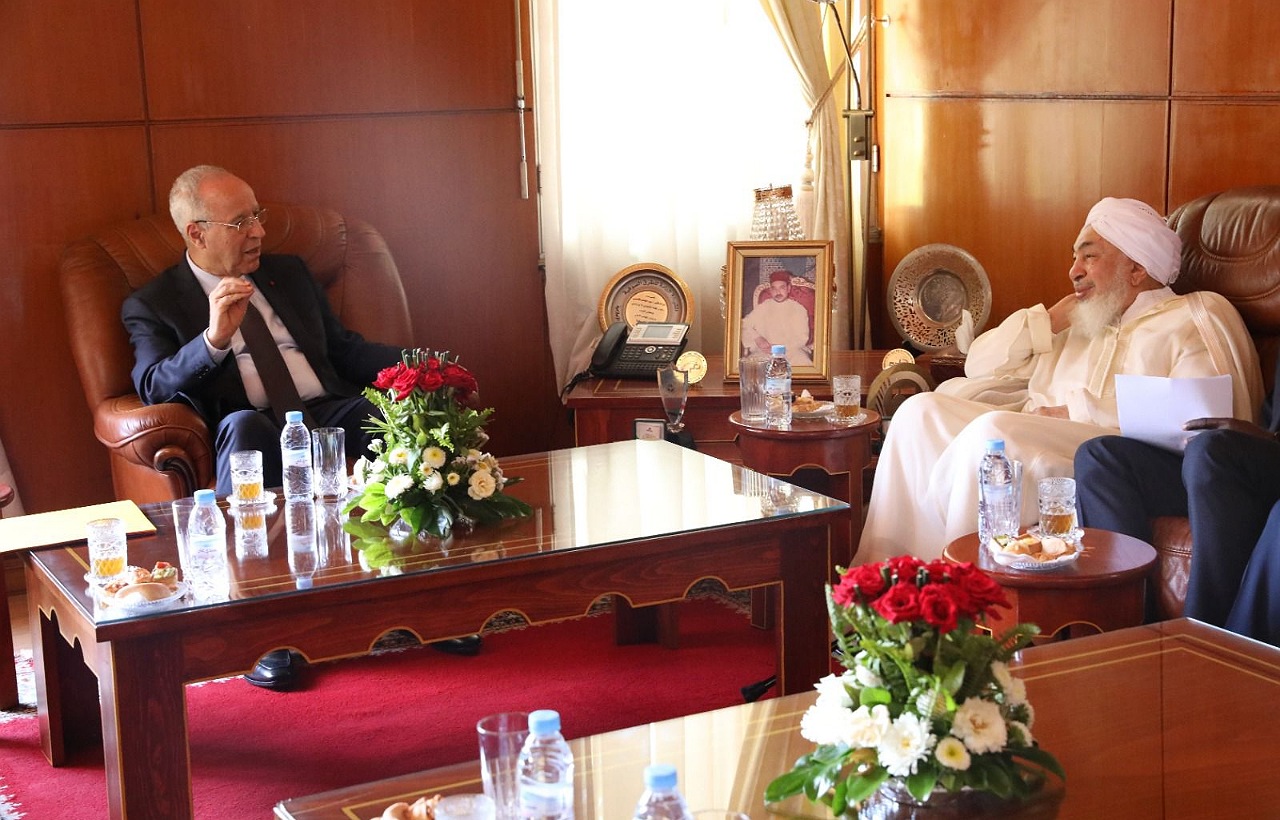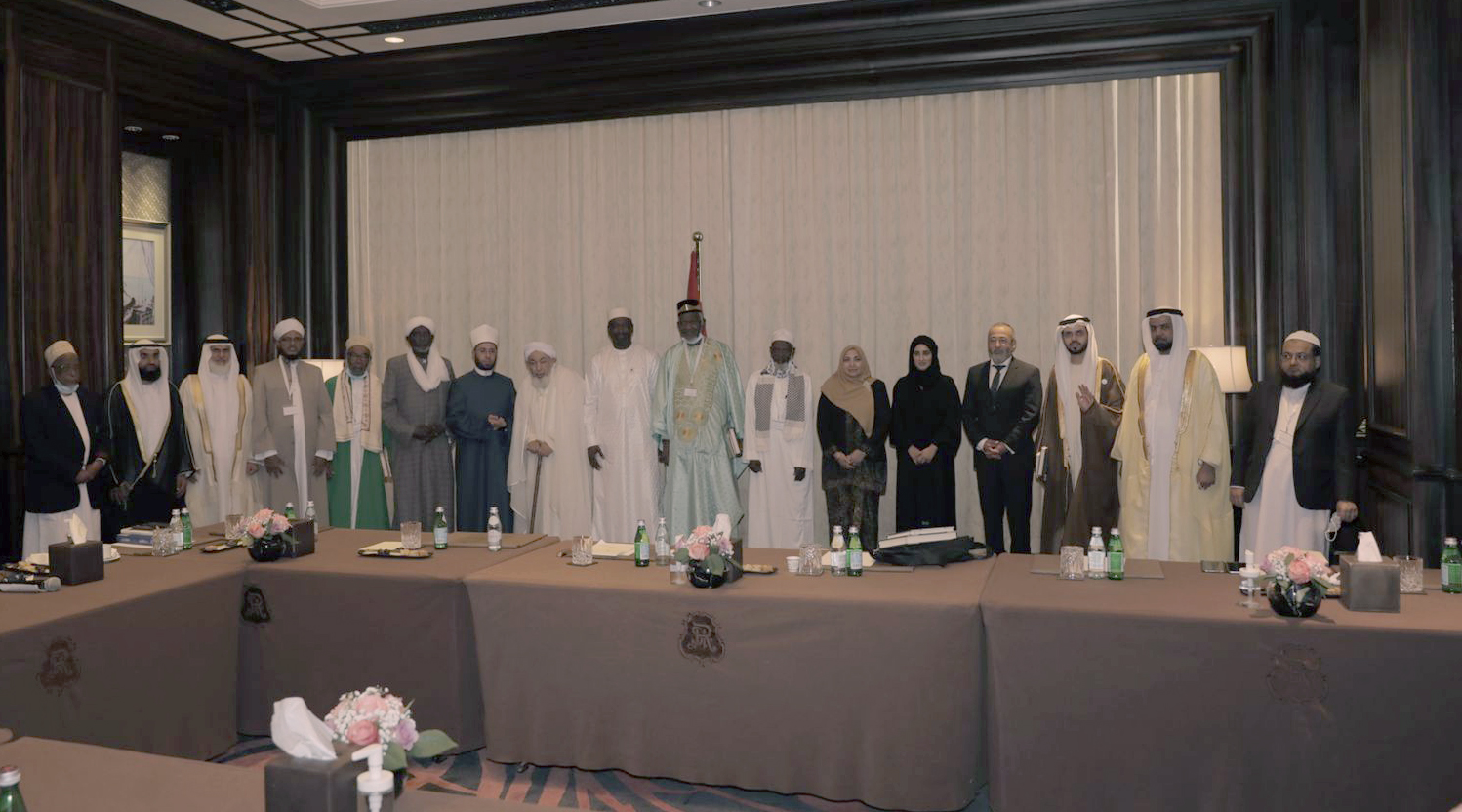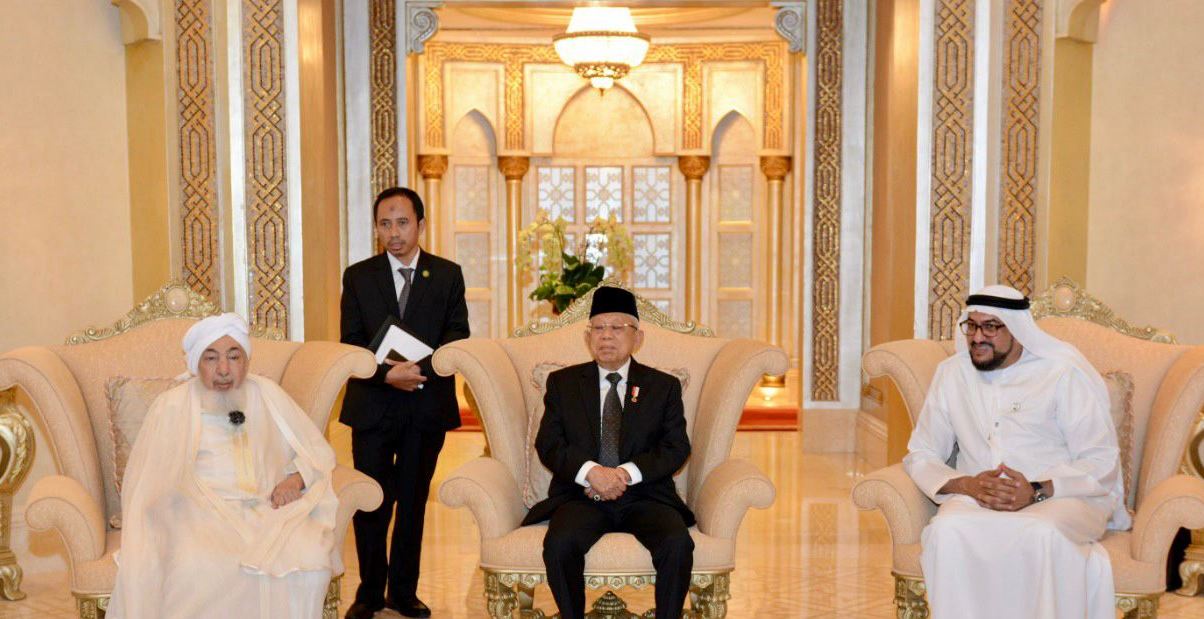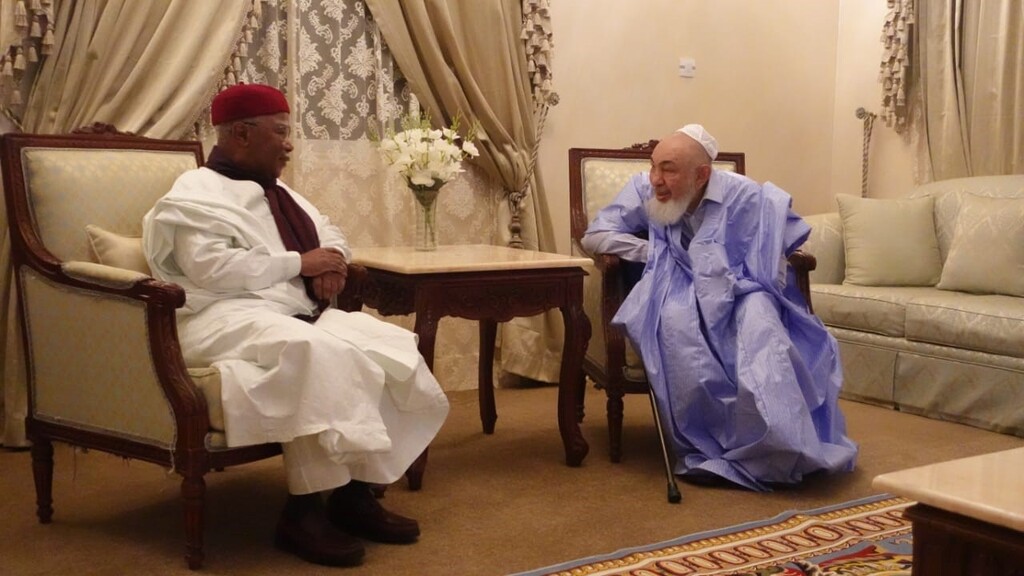Human Rights between Islam and the West
With regard to human rights in the West as a universal principle, we are going to introduce their background and philosophy from a Western perspective through a Western writer. I will interfere with only some short and limited comments to draw attention to some useful points in comparison. This writer is called Asberon Eide, director and founder of the Norwegian Institute of Human Rights at Oslo University. He says about the initiative and crystallization of the declaration:
The first initiative to make human rights a universal principle was by the then American president Franklin Delano Roosevelt in his letter to the American Congress in January 1941. His initiative was amazing due to the comprehensive aspect he gave to human freedoms and due to his insistence on that these freedoms have to be enjoyed with all over the world. He said, “In the coming days, which we work to make safe, we are looking forward to a world founded on four human freedoms: first, freedom of speech everywhere; second, freedom of everyone to worship God in his own way, anywhere in the world; third, freedom “to want”, which means– if translated into universal concepts- understanding and economic intelligence that secures for each country a healthy and peaceful life for its population and everywhere in the world; fourth, freedom from fear which means- if translated into universal concepts- to reduce arms across the world to the degree and extent that no country will be able to commit transgression against any neighboring country anywhere in the world.”
He also said, “This is not a vision for thousand years away, it is a defined basis for a world that we can achieve for ourselves in our age and our generation.”
Then there was the Atlantic Declaration in August 1941 by President Roosevelt and the British Prime Minister Winston Churchill who reiterated the same commitments after few months. In the 1st of January 1942 representatives of the governments of many countries in the East and the West met in Washington to approve the UN Declaration. As the Allays in the Word War II, their goal was to decide the goals they were fighting for. The governments represented in the meeting declared that the goal of gaining victory over their enemy was to defend life, freedom, independence, and religious freedom as well as to preserve human rights and justice in their lands and in others’ lands.
In 1942 an international group of researchers and diplomats convened at an invitation from the American Institute of Law, which is a private institution in the United States specialized in collecting and making laws, to develop a formula for a possible declaration or a memorandum for international human rights. The cultures represented in this group were the American, the Arabic, the British, the Canadian, the Chinese, the French, the Nazi German, the Italian, the Latin American, the Polish, the Russian, and the Spanish. The group finished the program of the human rights memorandum in 1944, but it did nothing more at that time. This memorandum was the basic inspiration when the UN Human Rights Department headed by the Canadian John Humphrey prepared the first project of the International Declaration in 1947. Many other initiatives followed until the end of the World War II. One was presented by a Latin American country as a follow-up to an international conference held in Mitchaboltpk in Mexico early in 1945 between the two Americans over the problems of war and peace.
When the founding conference was held in San Francisco in 1945, many of the Latin American countries exercised pressure so that the Charter of the UN itself should include a memorandum on human rights. Of these memorandums was the one prepared by the group assembled by the American Institute of Law and presented by the representative of Panama.
It was decided then that the charter should include a statement concerning establishing a human rights committee and that this committee should undertake the task of developing a draft for the international standards in the field of human rights.
Article (55 )H from the charter states that the UN will enhance and monitor the international respect for human rights as well as the fundamental freedoms for all without distinction or discrimination on racial, sexual, linguistic or religious basis. In article (56) all the member countries pledged to exert joint or individual efforts to cooperate with the UN as determined in article (55).
The charter of the UN is an international treaty by which all UN member countries have by law to support respecting and implementing human rights and fundamental freedoms without any distinction or discrimination.
The human rights committee started its job in 1947 and the drafting committee represented different parts of the world. It consisted of delegations from Australia, China, France, Lebanon, the Soviet Union, the United Kingdom, and the United States of America. The first draft prepared by John Humphrey, director of Human Rights in the UN, was largely based on the work that had been continuing since 1942 which was accomplished by representatives from different cultures. The final formula was based on an adapted draft edited by the French Rene Kayan. It was presented in the summer of 1948 to the General Assembly of the UN which approved it with light modifications in the 10th of December 1948. The Declaration includes a wide range of human rights such as the rights related to one’s safety (right to live – freedom from torture and maltreatment- freedom from slavery and from arbitrary deprivation of freedom), the rights related to necessary procedures and just trials, freedom to work and to express and practice any creed, freedom of speech and media, freedom of movement and the freedom of forming associations (such as workers’ unions and syndicates) as well as political, economical, social and cultural rights. This is the widest range of human rights approved until now by any agreement, be it national or international. (Eide, Asberon: The Historical Significance of the International Declaration; al-Majallah al-Dawlyyah li al-`Ulum al-Ijtima`iyyah pp 19-21, issue 158, December 1998)
Comment: This was an interesting presentation by Asberon for such wonderful principles. But it cannot be hidden that the international rights crystallized in Roosevelt’s initiative in his letter to the Congress represented an American, and similarly European, concern regarding the conflict with the communist bloc which started to emerge on the eve of the defeat of the German Reich. It talked about reducing arms, which indicates that it is an initiative affected by the results and atmosphere of the war. Not only this, but it also attempted to ensure for the Allies a position that gives them the upper hand over the international affairs on ethical basis. With regard to the representatives of the cultures he talked about, it will be suitable to pose a question about the representation of the Islamic culture or rather the complete exclusion of the Islamic culture from these discussions, though there were independent Islamic countries such as Egypt and Saudi Arabia. We do not intend to cast doubt on the role of Lebanon which represented the Middle East through its representative Mr. Sharl Malik who was an experienced legist and a distinguished personality but his share of the Islamic culture was not as big as his awareness of the Western culture, to say the least. In Addition, though he was a prominent personality, he was not representative of a power that could be listened to in a discussion held by the victorious countries in the World War.
It is a declaration that is imposed retroactively on cultures that were absent such as the Islamic and Chinese cultures. We are going to talk about this later.
According to Subhy al-Mahmasany, the development of human rights in the West started with the Romans. The Roman law developed over 14 centuries; that is, since the establishment of Rome in the 8th century BC up to the death of Emperor Justinatius in the 6th century AD. Over this long history, the sources of legislation were many. Beside custom and tradition, there were laws issued by the state, the discretion of judges, and legists’ studies. The laws over the Roman period were issued by the king, the congress, different parliaments, or the Emperor.
Meanwhile, the discretions of judges played great role in the development of the Roman legislation; particularly, through the decrees of Alberito, judge of the judge, who contributed to promote the procedures and to inlay old civil law with some people’s rulings and hence to approve equality in rights between the classes of the population of the Empire.
Contribution was also made by Roman legists through their researches, explanations, and books; particularly, the famous five: Babinjnos of Homs, Olpejanos of Sur, Gaius, Paul, and Moudstinos.
Justinatius gave orders that these various sources should be recorded in six books. Thus they were collected with the title of “A Compilation of Civil Rights”. Most of the Modern European laws have been affected by the Roman legislation and adopted it as their basis.
Sporri Eide, however, holds the view that the most important stage in the development of human rights is such slow development that Europe witnessed in the form of intellectual conflict between different liberal and conservative ideas over four centuries. Moreover, the idea of human rights itself when used by the developers of the memorandums of 1947- 1948 expressed the concept of the modern age. They were preceded by older and narrower terms such as “natural rights”, “man’s rights” and “civil rights.”
We can trace the roots of the change that took place in world thought during the age of Renaissance which inaugurated rational discussions that growingly liberated themselves from the vagueness and ambiguity of the past centuries to bear glad tidings of an explosion in the scientific and intellectual creativity.
As for the political outlook, most of the debate focused on the concept of the social contract. In 1603, the Calvinist Johannes Altoseos of Holland, came out with the theory of consent as a necessary requirement for political links. This attitude was developed further later by others; particularly, by John Locke who came 80 years later. In the following years, the traditional theory of the natural law changed through adopting the theory of natural rights.
In 1651 Tomas Honz in his book the State or the Substance, Form and Authority of the Commonwealth: Clerical or Civil, meant to arrange a prescription for establishing an ideal state where peace and security are guaranteed. In this regard, he inserted the theory of “natural right” as opposed to “the natural law.” He had very pessimistic view with regard to the behaviors of human beings in their “natural state” before engaging in the social contract. His key principle was that people engaged in a social contract with one another because they thought that they can protect themselves better by giving all authority to a ruler.
The major development came with John Locke and his two treaties about the government. They were the motive behind the first memorandum of rights in 1688. He asserted the necessity of acceptance or consent as a basis for ruling and government. Human rights are equal and hence nothing can force an individual to submit to the authority of another except acceptance and consent. He obviously gave up the pessimism of Hobz; for, contrary to Hobz, he admitted that human beings are by nature free and equal and most of them abide by the natural law. Thus, the natural law constitutes and protects the rights of life, freedom, and property. It also requires man to fulfill his promises and commitments and to do his best to guarantee and secure others’ interests and welfare. We can also say that the differences between the concepts of Locke and those of Rousseau stirred conflicting concepts concerning human rights. There is a concept inspired by Locke’s thought and prevails largely over the Anglo-American world. It sees human rights, in essence, as freedom from the state. However, there is another concept that focuses on Rousseau’s thought and it largely spreads over Europe and Latin America. It not only sees human rights as freedom from the state but it demands rights from the state. This concept thus has a positive attitude toward the state as a means for general welfare.
The interaction between politicians and philosophers was shown also by Tomas Jefferson who found inspiration in Montesquieu and Locke’s ideas when he wrote the declaration of the independence of America. There is also the French Marquis de La Fayette who took part in the American Revolution in 1777 and was appointed as a major general. He had a big role in the army of Revolution against the English in the period 1777-1781 and when he returned to France in 1782, he was elected as a member in the Board of Classes in 1789. He was also one of those who developed the first draft of the declaration of human rights that was undoubtedly inspired by the declaration of the independence of America and by Rousseau’s works.
In 1791 the US approved the memorandum of rights attached to the constitution which had been approved in 1787. Part of the memorandum aimed at securing and guaranteeing the interests of the United Stated in the face of the federal authorities. Therefore, the first article included the classical human rights: freedom of religion, freedom of speech and journalism, freedom of meeting, the right to submit petitions to the government to alleviate sufferings. The fourth article was on the right of privacy and freedom from arbitrary arrest. The fifth and sixth articles were on issues related to the suitable procedures and just trials.
Many of these rights were already in the British memorandum for rights. The American memorandum went further but could not reach the French declaration of 1789 which comprehended more rights. Nevertheless, in comparison to the French declaration, we find that the American memorandum of rights was part of a constitutional document and therefore it was immediately binding on the legal side while the French declaration did not find a solid place in the French constitutional system for more than 150 years. It was asserted as a prelude for the French constitution in 1791. But this constitution disappeared in favor for the new constitution in 1972 which abolished the royal system. In fact, the French declaration did not find an outstanding place in the French positive constitutional law until the new constitution was approved in 1946.
Now after realizing all this, it could be said that it was Tomas Bin who crystallized the most comprehensive vision of human rights as a reaction to the gaps or shortcomings noticed by the Europeans at that time. In his book Human Rights, published in 1791 to defend the critiques of Redmond Burke concerning natural rights, he bypassed the resonant phrases of rights to analyze the reasons of anger and discontent in the European society besieged by despotic governments, the spread of poverty, and many, violent wars. In his analysis, he was supporting the democratic republic trend and was concerned with the procedures for the welfare of all and for providing relief for the poor, pensions for the aged, and education for all. He asserted that this should be achieved through imposing taxes. Thus, he supported rights that went away beyond all that was circulating in thought during those years.
Many in the Western world refused the idea of unchangeable, established rights. Others sought to confine them to the minimum which they called the civil rights; and they had many reasons. The reaction of the conservative trends, which gained strength because of the transgressions committed by the French Revolution, drove many to oppose the idea of equality between human beings. Moreover, social reformers have found that the limited concepts of civil rights were very restrictive.
As for the extremists, they saw that natural rights or civil rights are but a tool employed by the bourgeoisie in its struggle with the workers’ movements.
In Europe, the Austrian Chancellor Prince Mitring united and coordinated efforts to secure despotic suppression so that ruling dynasties could oppress the democratic and national movements. During the period between 1815 and 1848 he attempted to establish and support a chain of international alliances across Europe against democracy.
He considered the efforts that were done for democratic political change in the twenties and thirties of the past century in Italy, Spain, and Germany as unhistorical and unrealistic. He claimed that those who stand by the liberal side try to take from England the theories and ideas of freedom and equality which have no historical roots in the continent. He supported the heritage and class hierarchy not equality; for systematic, organic development was necessary. He said, “A people who cannot read and write cannot make proper constitutions.”
We can see the period between 1800 and 1945 as a long period or stage of conflict between those who sought to keep higher authority and better privileges and those who objected to this. In Britain, voices of objection to the natural rights were raised by many. Amond Burke was impressed by the developments of the revolution in France and expressed his objection to the idea of human rights and people authority. In his book Reflections on the Revolution in France, first published in 1790, and in his other succeeding books, he took to portray in black phrases the dangers he saw in democracy when the masses would rule unbound and unguided by the responsible leadership of the inherited Aristocratic class. He viewed that rational thinking and reflective projects that aimed at reestablishing the political structure cause destruction to the capabilities and financial and spiritual sources the society acquired with effort and difficulty.
On the contrary, he lauded what he considered as the virtues of the English constitution with its continuity and unsystematic growth with certain rights based on the status of the individual not on abstract and equal rights. The English acceptance of the hierarchy was a positive, not negative, quality in this view.
In terms of the philosophy of legislation and the theory of law, the nineteenth century witnessed strong emphasis on the positive philosophy. This was started by Jermy Pentam, founder of Pragmatism in Britain. Then this philosophy was widely developed by John Austin who attempted in is book Determining the World of Legislation in 1832 to point out the difference between law and ethics, which he considered to have gone overlooked due to the principles of natural laws. He crystallized the definition of law as a sort of commands issued by a ruler accompanied by threat of deterring punishment in the case of disobedience and noncompliance. This concept contradicts completely with the theories of natural law and natural rights.
Nevertheless, the margin of democracy was limited. If John Locke considered the consent of the subjects as one of his big concerns, it was actually landlords and proprietors who kept his mind busy, not the public.
Two different trends emerged among those who kept supporting the principles of the fundamental freedoms and natural rights: one supports freedom with independence and the other supports freedom with participation.
Independence from the state has been achieved through the tools that govern and chain it; that is, through dividing authority into legislative, executive, and judiciary in accordance with the opinions suggested by Montesquieu. These are the suitable procedures and basic guarantees for the freedom of the individual and the principle of non-retroactivity in criminal issues as well as freedom from torture and protection of properties in addition to the freedom of speech within some restrictions.
These in brief are the most important developments the West witnessed in the past and recently in the field of human rights as results of conflicts, real wars, and broad philosophical and legal argumentation. All these events and developments that accompanied it were purely Western and on the other bank of the Mediterranean Sea- or the other side as our forefathers called Anadausia and other neighboring countries of south Europe.
Our comment is that, for us as Muslims, many of these issues were clear-cut such as the guarantees related to judiciary system, the forbiddance of torture, and the protection of properties.
Unlike Montesquieu’s approach of complete separation between the three authorities, according to his famous phrase in his book the Spirit of Laws “Authority stops authority”, there is the principle of cooperation between authorities which the French legist Rene Thapa called the interrelation of authorities and which appeared in the judiciary system in the form of the attorney general who represents the position of the executive authority “the government” before courts. Besides, the possibility to dissolute the parliament by the president is another manifestation of the interrelation between authorities in the Western system.
Interrelation and cooperation between authorities to achieve justice in people’s life is closer to the Islamic concept. In addition, the legislative authority in the Western sense of absolute power to enact laws in all fields does not conform with the supremacy of the heavenly laws which gives man the right to legislate on the basis of ijtihad in certain fields that increases or decreases owing to the requirements of the shari`ah and the necessities and needs of life.





